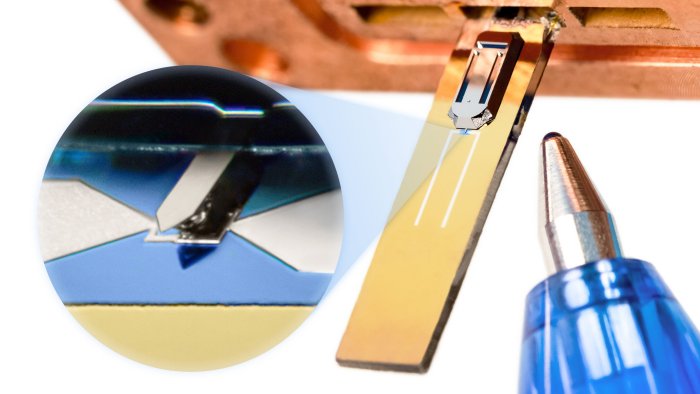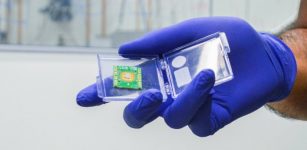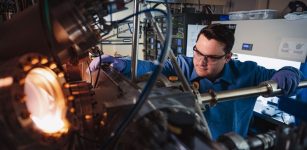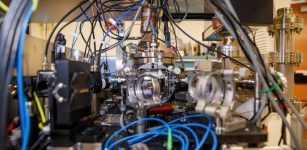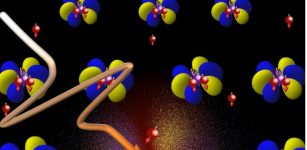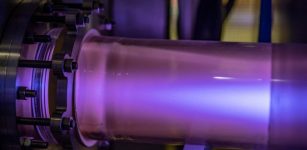Blast Chiller For The Quantum World – Making Quantum Properties Of Macroscopic Objects More Accessible
Eddie Gonzales Jr. – MessageToEagle.com – The quantum nature of objects visible to the naked eye is currently a much-discussed research question. A team led by Innsbruck physicist Gerhard Kirchmair has now demonstrated a new method in the laboratory that could make the quantum properties of macroscopic objects more accessible than before.
Superconducting circuit (white) on a silicon substrate fixed in a copper holder. The chip (silver) with the micromechanical oscillator is attached to the silicon substrate. Credit: IQOQI Innsbruck
With the method, the researchers were able to increase the efficiency of an established cooling method by an order of a magnitude.
With optomechanical experiments, scientists are trying to explore the limits of the quantum world and to create a foundation for the development of highly sensitive quantum sensors. In these experiments, objects visible to the naked eye are coupled to superconducting circuits via electromagnetic fields. To get functioning superconductors, such experiments take place in cryostats at a temperature of about 100 millikelvin. But this is still far from sufficient to really dive into the quantum world.
In order to observe quantum effects on macroscopic objects, they must be cooled to nearly absolute zero using sophisticated cooling methods.
Physicists led by Gerhard Kirchmair from the Department of Experimental Physics at the University of Innsbruck and the Institute of Quantum Optics and Quantum Information (IQOQI) have now demonstrated a nonlinear cooling mechanism with which even massive objects can be cooled well.
Higher cooling capacity higher
In the experiment, the Innsbruck researchers couple the mechanical object—in their case a vibrating beam—to the superconducting circuit via a magnetic field. To do this, they attached a magnet to the beam, which is about 100 micrometers long. When the magnet moves, it changes the magnetic flux through the circuit, the heart of which is a so-called SQUID, a superconducting quantum interference device. Its resonant frequency changes depending on the magnetic flux, which is measured using microwave signals. In this way, the micromechanical oscillator can be cooled to near the quantum mechanical ground state.
“The change in the resonant frequency of the SQUID circuit as a function of microwave power is not linear. As a consequence, we can cool the massive object by an order of magnitude more for the same power,”said David Zöpfl from Gerhard Kirchmair’s team, in a press release.
The findings are published in the journal Physical Review Letters.
This new, simple method is particularly interesting for cooling more massive mechanical objects. Zöpfl and Kirchmair are confident that this could be the foundation for the search of quantum properties in larger macroscopic objects.
Original story – Universität Innsbruck – via EurekAlert
Written by Eddie Gonzales Jr. – MessageToEagle.com Staff

